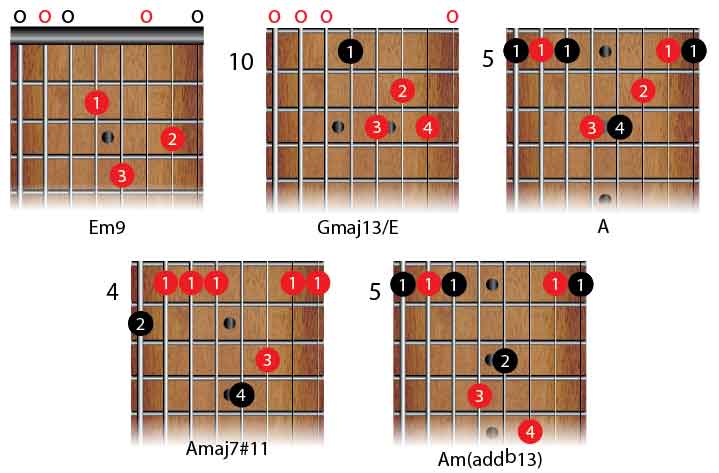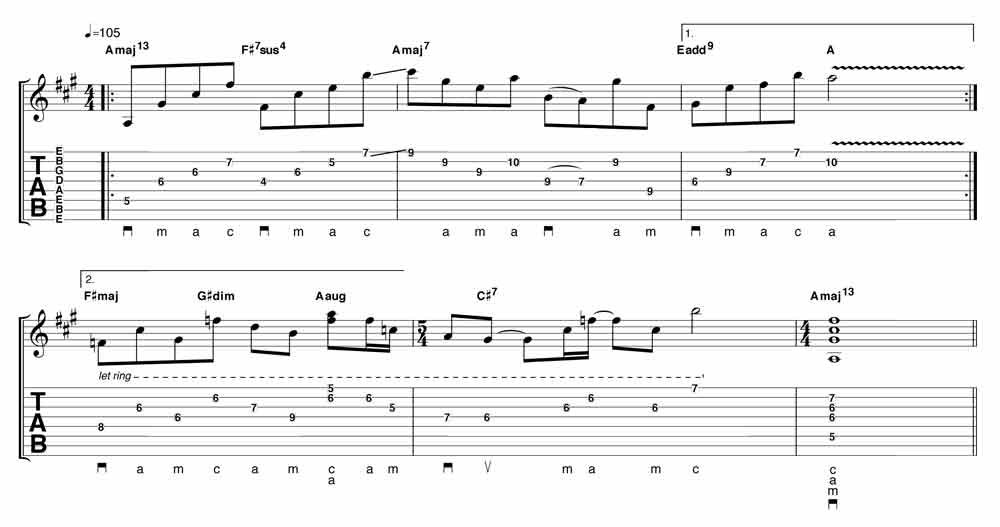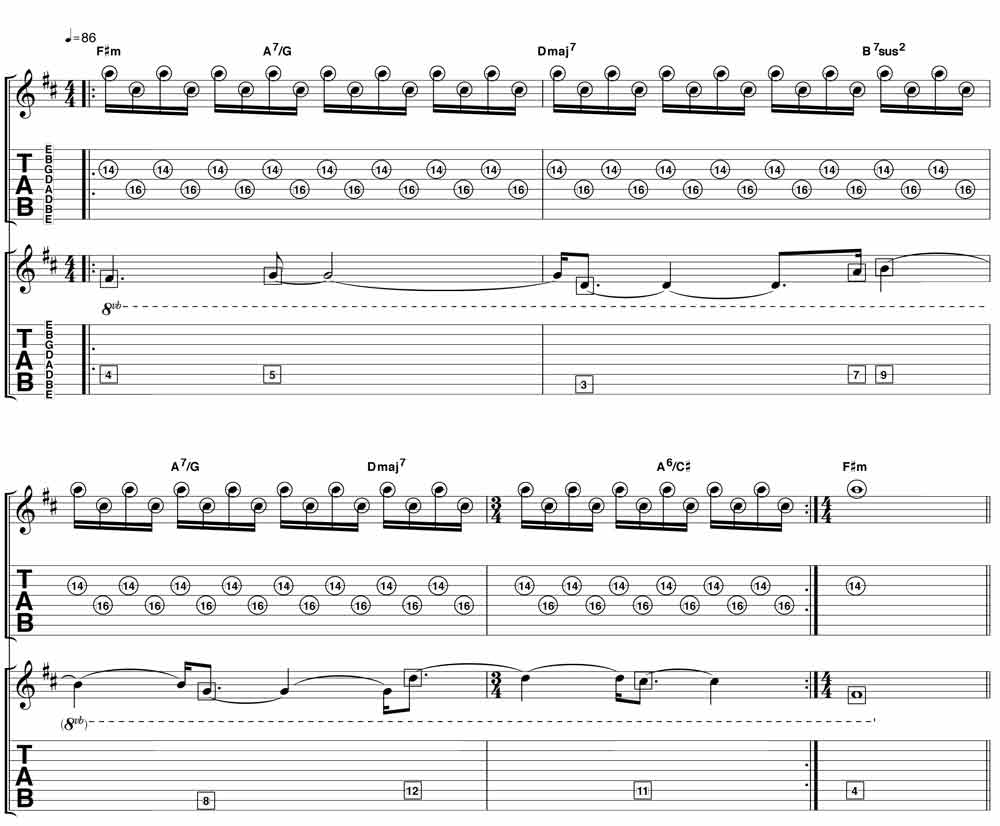Tosin Abasi: how to master eight-string guitar
Exclusive tab and video lessons covering chords, arpeggios and hybrid picking
Over the last decade or so, the seven-string guitar has gone from being a rarity to a standard tool within many genres. More recently, the desire to extend the guitar's range further has become common, and more manufacturers are now producing eight-string guitars.
Tosin Abasi has had a big hand in the rising success of the eight-stringed beast. His unorthodox compositions and extraordinary technique, demonstrated with his band, Animals As Leaders, has become a 'go to' point of reference for extended-range players.
In this lesson, Tosin outlines his approach to tuning, using eight strings to build chord shapes and arpeggios, and navigating across all the strings with the use of hybrid picking.
Tosin is tuned to EBEADGBE.This enables him to gain instant familiarity with the eighth string, simply transferring everything from the sixth string on to the eighth.
1. Eight-string chords 1

For these chords, Tosin takes advantage of tuning the eighth and sixth strings to E. This allows him to fret a standard six-string chord shape and duplicate chord tones by barring a finger over the seventh and eighth strings or, where appropriate, by playing the open seventh and eighth strings.
Click here for full-scale image
2. Eight-string chords 2

Within these shapes, Tosin uses the full range of the guitar to create chords that have huge separation between the highest and lowest notes. Here, Tosin frets some relatively simple shapes on the four treble strings and uses the open eighth string for serious bottom end and richness.
Want all the hottest music and gear news, reviews, deals, features and more, direct to your inbox? Sign up here.
Click here for full-scale image
3. Locating repeated notes

Tosin has a great command of the fretboard and understands how often pitches repeat across the neck. He uses this repetition as a basis for building scale and arpeggio sequences that cover several octaves. For a challenge, try applying this line, which repeats E notes across the neck, to all 12 notes of the chromatic scale.
Click here for full-scale image
4. Em7 arpeggio

Here, Tosin takes advantage of repeated notes across the fretboard to build an Em7 arpeggio, which can be continued into a three-octave sequence. Take note of the picking pattern, because Tosin's economical use of down- and upstrokes, slides and hammer-ons makes string changes and position changes easier.
Click here for full-scale image
5. Emaj7 arpeggio

Tosin recommends learning each of the intervals of the Em7 arpeggio (root, b3rd, 5th, b7th) so that you can easily adapt them to play this maj7 arpeggio. All you have to do is change the b3rd (G) and b7th (D) to a major 3rd and major 7th by raising each note by a semitone to G# and D#.
Click here for full-scale image
6. Emaj7#5 arpeggio

On this occasion, Tosin applies his deep knowledge of music theory to the arpeggio template to create a more exotic and atmospheric flavour. Starting with the Emaj7 pattern, he raises each of the 5ths (B notes) by a semitone to give an Emaj7#5 arpeggio.
Click here for full-scale image
7. Em(maj7) arpeggio

Once again, Tosin delivers an arpeggio with an unusual sound by altering his template. He combines b3rds with major 7th notes to form a three-octave Em(maj7) arpeggio. We recommend trying Tosin's example and then exploring further sounds that can be created by altering the 3rds, 5ths and 7ths.
Click here for full-scale image
8. Basic hybrid picking exercise

Having eight strings presents challenges for the picking hand while navigating the strings. 'Hybrid picking' is when you use your pick on the bass strings and pick-hand fingers on the treble strings. Start slowly and focus on steady timing and consistent picking volume.
Click here for full-scale image
9. Hybrid-picked chord progression

In this short musical idea, Tosin applies hybrid picking to an arpeggio-based chord progression. He allocates specific picking fingers to each string to minimise movement in his pick hand, while keeping the music sounding smooth. Take note of the picking sequence so that you don't over-rely on your stronger fingers.
Click here for full-scale image
10. Hybrid picking arpeggio

This time, Tosin takes an eight-string chord and ascends and descends the shape using hybrid picking. This creates a harp-like texture and a long, interesting phrase from a single chord. Aim for a consistent attack between each picking finger and try not to rush when changing from string to string.
Click here for full-scale image
YouTube : https://youtu.be/xPRa5XP_Jms
11. Pick-hand tapping

In this exercise, Tosin uses his picking hand to tap a repeating two-note figure. This acts as a metronome and also establishes a sparse harmonic texture. Tosin uses the first and second finger of his pick hand to tap because they sit conveniently over the required frets.
Click here for full-scale image
12. Fret-hand tapping

Here, Tosin continues the tapped line from the previous example and adds a melody with his fretting hand. We recommend practising the two parts separately to begin with. There are no picked notes, so you'll have to tap every note. Practise slowly and focus on timing, strong tapping and accurate finger placement.